What is the Joint Valletta Action Plan (JVAP)?
In November 2015, a Summit on Migration took place in Valletta, Malta. European and African Heads of State and Government gathered around the objective to strengthen cooperation between the 2 continents.
In a spirit of solidarity, partnership and shared responsibility, 2 texts were adopted:
The political declaration underlining the concern of participating States and organisations regarding humanitarian consequences of irregular migration and their commitment towards the improvement of the management of migration flows.
The Joint Valletta Action Plan (JVAP), which lays down a series of priorities aiming at supporting Valletta Partners with the enhancement of migration governance between Europe and Africa. The JVAP became the regional framework to address migration policy. It is built around five domains, each addressing a specific area.
‘We are under no illusions that we can improve the situation overnight. But we are committed to giving people alternatives to risking their lives.’
Source: Consilium press release, 2015, Remarks by President Donald Tusk at the press conference of the Valletta summit on migration, [Online]
The 5 domains of the JVAP
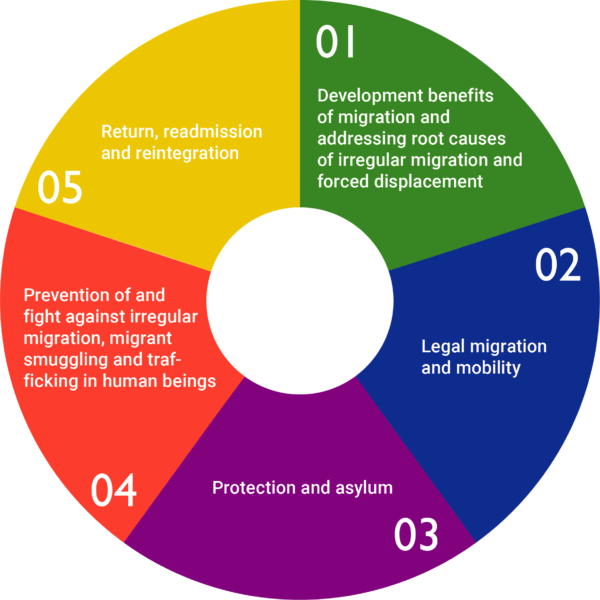
It is also during the Valletta Summit on Migration that the EU Emergency Trust Fund for Africa (EUTF) was formally launched. Its 3 focus regions are the North of Africa region, the Sahel/Lake Chad region and the Horn of Africa region. The Fund addresses its 4 main lines of action in an integrated and coordinated way: greater economic and employment opportunities; strengthening resilience of communities and
in particular the most vulnerable, including refugees and other displaced people; improved migration management in countries of origin, transit and destination; and improved governance and conflict prevention and reduction of forced displacement and irregular migration. Concrete results are intended in a rapid and effective manner. The total funding is of approximately 4.7 billion euros.
The JVAP Follow-up
The Khartoum Process and the Rabat Process were identified as suitable existing mechanisms to monitor the implementation of the JVAP. Focal Points from these regional migration dialogues covering West and East Africa, and Europe, became JVAP Partners. The JVAP Follow-up is a stakeholder-driven process, JVAP Focal Points demonstrate ownership by providing as much information as possible on their initiatives to populate the Database. This reporting enables decision makers to develop fact-based migration policies and share good practices.
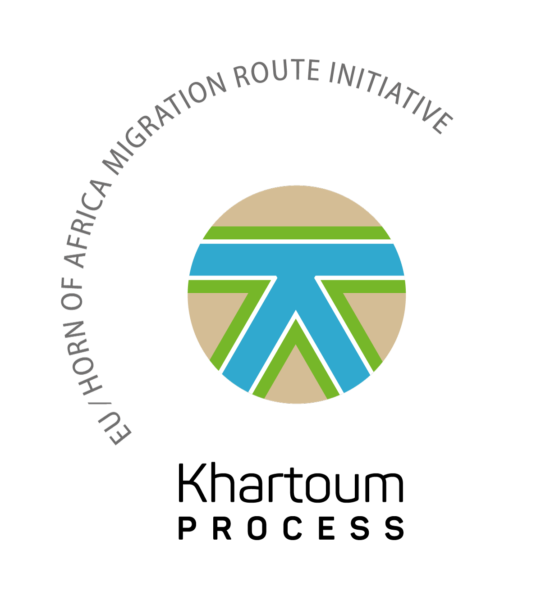
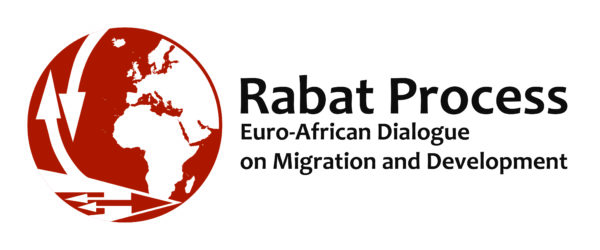
The International Centre for Migration Policy Development (ICMPD) bolsters this process through the Support Project to the Africa-EU Dialogue on Migration (MMD), funded by the European Union, in the framework of the Joint Africa-EU Strategy and through the Pan-African Programme.
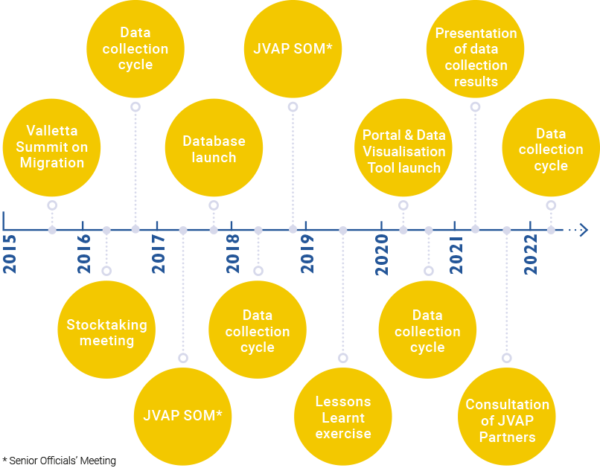
Since 2015, JVAP Partners have taken stock of their progress on several occasions at high-level JVAP Senior Officials Meetings (SOM) where representatives of both the Khartoum and Rabat Processes are present. Their Joint Conclusions have reiterated the commitment to an African – European partnership on migration governance and laid out thematic priorities based on the analysis of the JVAP tools.
The JVAP Follow-up is also discussed in thematic formats and set on the agenda of each dialogue platform on a regular basis. For more information, please consult the Khartoum and Rabat Process websites and documents.
JVAP Follow-up tools
In order to ensure the follow-up of the JVAP, a series of tools were developed:
An operational Database
The JVAP Database was created to ensure transparency for JVAP Partners on initiatives developed by the JVAP Partners. It comprises initiatives undertaken since 2015 in the Khartoum and Rabat Processes regions, covering the 5 domains of the JVAP and addressing one or several of the 16 Priority Actions (PAs) and 89 Priority Areas (As).
2 types of initiatives can be registered in the Database:
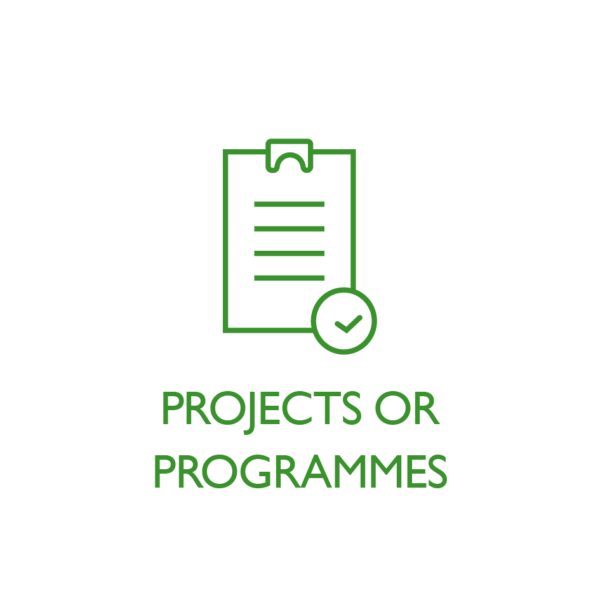
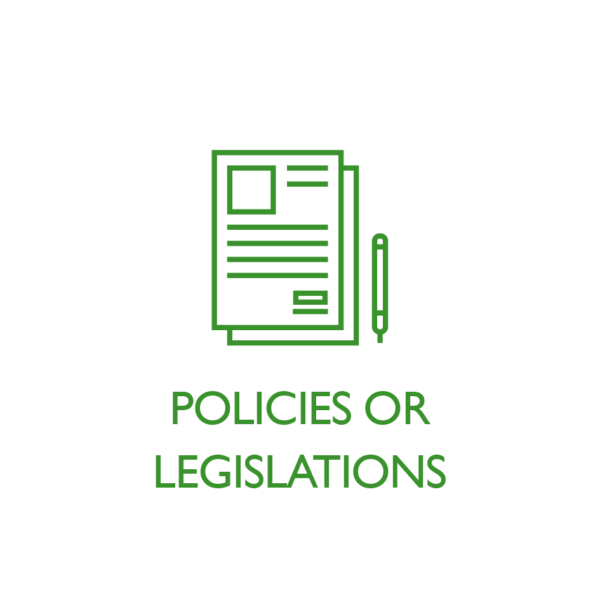
For each registered initiative, the Database compiles information such as:
- Title and description of the initiative
- Timeframe
- Country(ies) of implementation
- Implementing organisations
- JVAP domain(s) and Priority(ies) tackled
- Funding and Partners
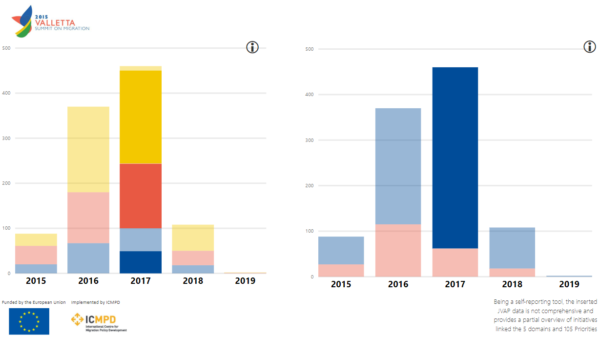
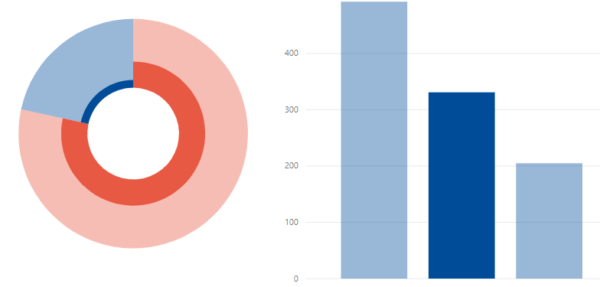
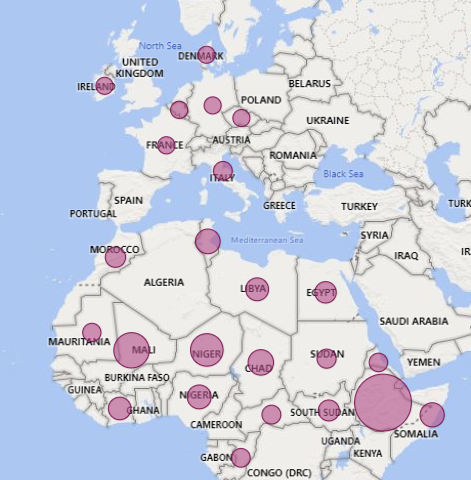
A Data Visualisation Tool
A Data Visualisation Tool was set up to provide JVAP Partners with actionable knowledge in the form of dynamic data visuals to drive fact-based decision-making throughout the JVAP Follow-up. It is connected to the Database allowing changes to be reflected in real time.
The Data Visualisation Tool may be used in 2 different ways. Custom-made data visuals are prepared:
-
For the specific Khartoum or Rabat technical or high-level meetings
Upon request of one of the JVAP Partners to spotlight their efforts and commitments on implementing the JVAP in internal or external meetings
A reference Portal
The JVAP Follow-up reference Portal provides information and updates about the JVAP Follow-up to the migration policy community and broader public, and serves as gateway for JVAP Partners.
By logging into their personal accounts on the portal, Partners access their ‘Dashboard’ from which they can be redirected to:
The Database
The Data Visualisation Tool
They can also access supporting materials and resources designed to assist them with data collection, entry, and cleaning processes.
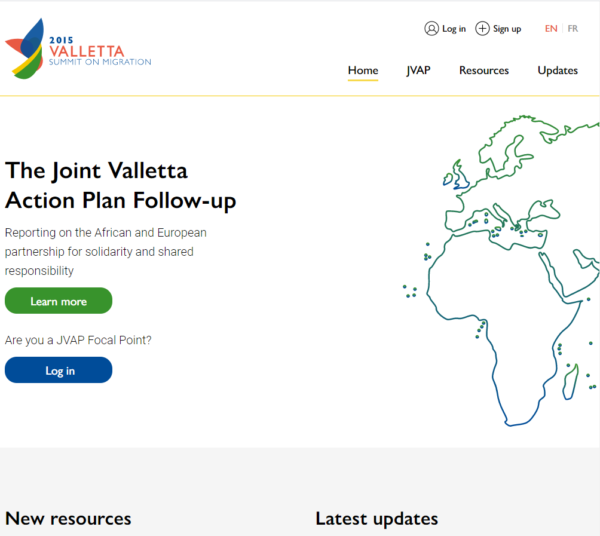
JVAP Follow-up key achievements
Since 2015, the JVAP Follow-up Team can report on the following key achievements:
3
70+
3
2000+
15+
Operational tools: a Database, a Data Visualisation Tool and a Portal
Database training sessions
Data collection cycles
Initiatives recorded and verified in the Database (including EUTF)
Data analyses fed back into high-level and technical meetings

